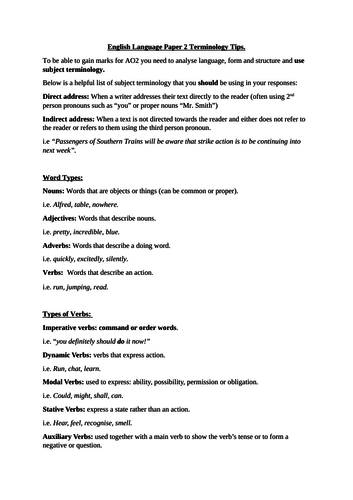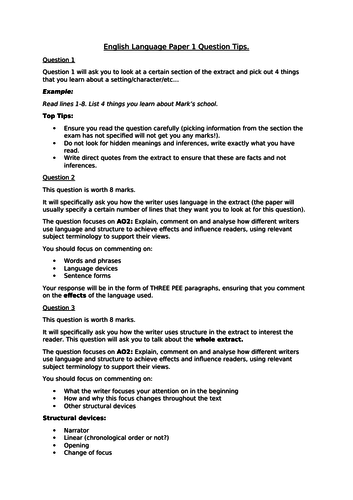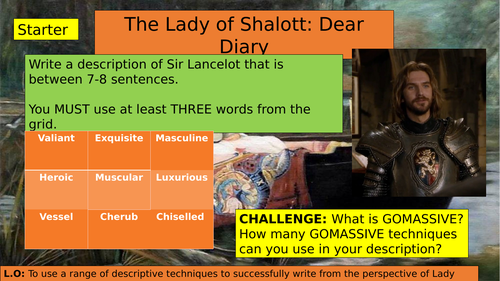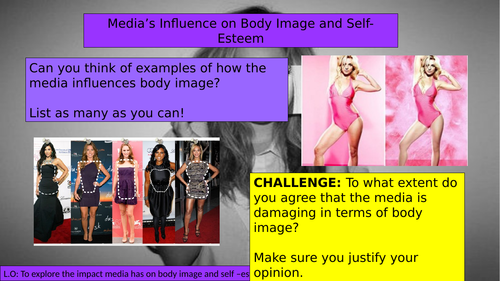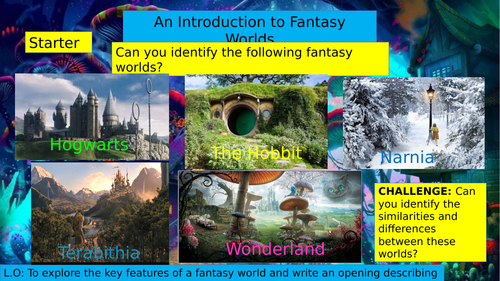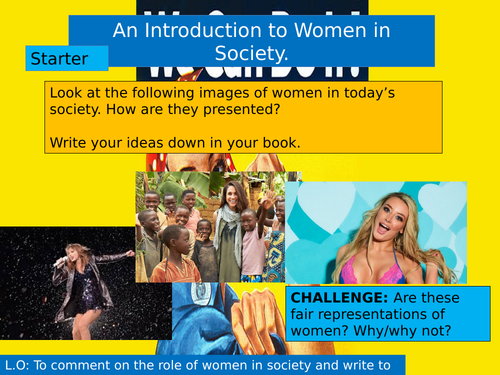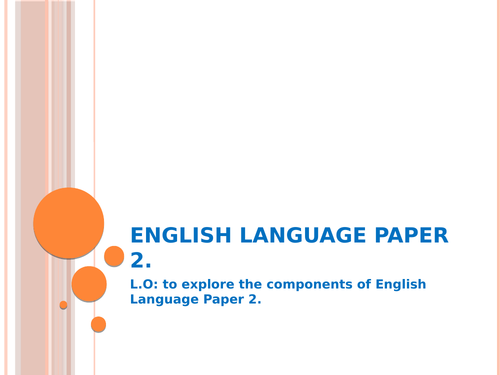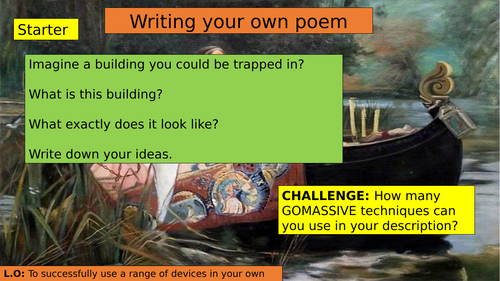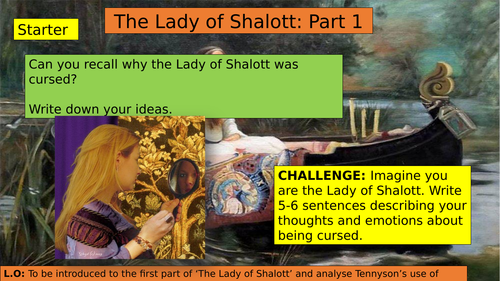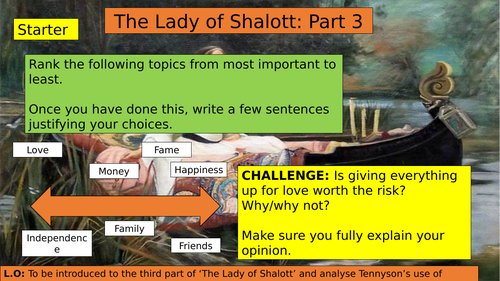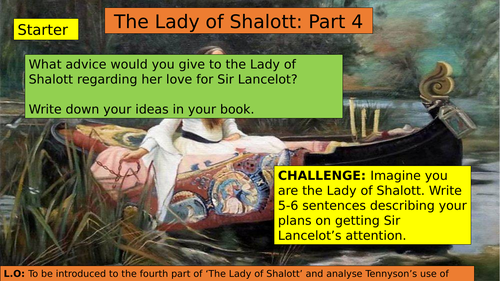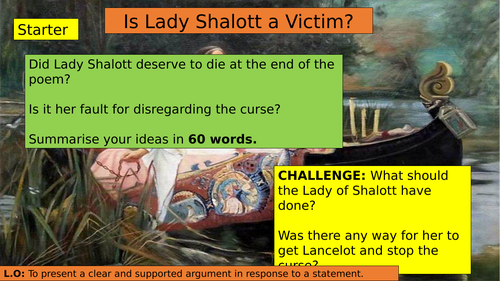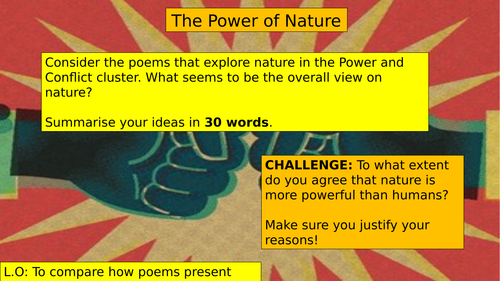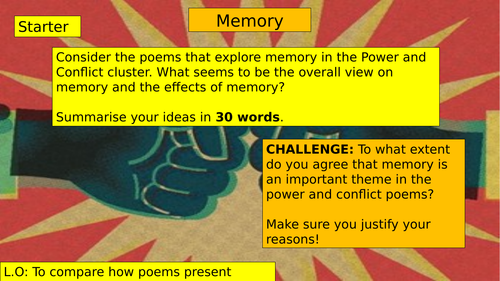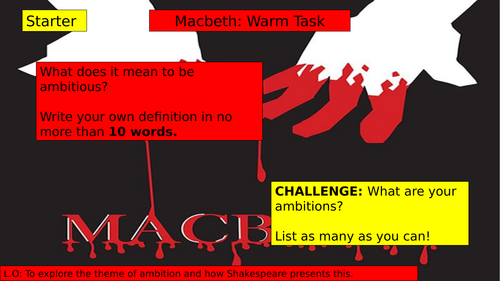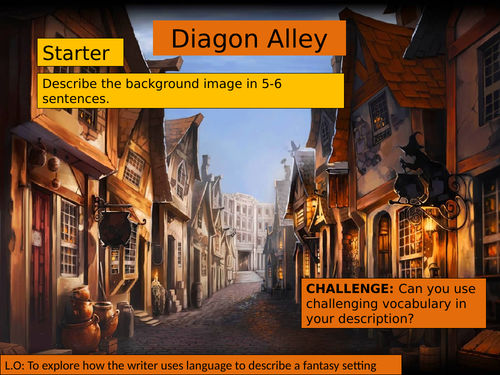60Uploads
19k+Views
4k+Downloads
All resources

KS4 English Language Paper 2 Terminology Tips
A worksheet for KS4 pupils explaining key terminology (with definitions) to use for English Language Paper 2.

Tracking Fate in Romeo and Juliet
This is an A3 worksheet for KS4 classes studying Romeo and Juliet. It allows them to write key examples from the play where fate is explored to make it easier to track its importance.

KS4 English Language Paper 1 TOP TIPS
A worksheet provided top tips to pupils on how to approach English Language Paper 1.

KS3 (7/8/9) The Lady of Shalott Newspaper Article
This is a lesson planned for a high-ability Year 7 class. The lesson focuses on reporting and consolidating the events in the poem of ‘The Lady of Shalott’ and aims to ensure that pupils understand the key events, as well as how to embed AFORREST techniques and how to structure a newspaper article. There is an activity supporting pupils in planning their language devices. This lesson is easily adaptable for any KS3 class of any ability.

KS3 (7/8/9) The Lady of Shalott Diary Entry
This is a lesson planned for a high-ability Year 7 class. The lesson focuses on Lady Shalott’s first glance of Sir Lancelot in the poem ‘The Lady of Shalott’ and aims to ensure that pupils understand how to embed a range of GOMASSIVE techniques into their creative writing. There are activities supporting pupils in improving their vocabulary and planning GOMASSIVE techniques to use. There is then an activity supporting pupils in writing their diary entry using a model text. This lesson is easily adaptable for any KS3 class of any ability.

(KS3 7/8/9) Media Influence on Body Image
This is a lesson planned for a middle-ability Year 9 class focusing on how the media influences body image. Pupils will discuss various images and the impact they have on teenagers and their body image. There is also a TED talk (link included in ppt notes) for pupils to watch on the influence of media. Pupils will then write a letter to Seventeen Magazine persuading them to stop body-shaming and focusing on skinny bodies. There are sentence starters included to support pupils in their writing. This lesson is easily adaptable for any KS3 class of any ability.

KS3 7/8/9: Introduction to Fantasy Worlds
This is a lesson planned for a middle ability Year 8 class. It introduces pupils to fantasy worlds but initial discussing the worlds they know and based on this, what they think they key features of a fantasy world should be. There is then a brief example of an opening description of a fantasy world for them to discuss before they then have a extended writing task of writing their own opening. There are sentence starters to support pupils with their writing and level descriptions to aid them in their writing and the self-assessment task. This lesson can be easily adapted for a KS3 class of any ability.

(KS3 7/8/9) Women In Society Opening Assessment
This is a lesson planned for a middle-ability Year 8 class. It is an introductory lesson looking at a Women in Society scheme of work. Pupils are encouraged to consider how women are currently presented in today’s society and pupils will write a speech presenting their point of view in response to a statement. This lesson can be easily adapted to any KS3 class of any ability.

English Language Paper 2 Question 1
This is a short lesson focusing on question 1 of the English Language Paper 2 exam. It introduced the exam briefly to the students, before requiring them to look at an extract from the Daily Mail on Alison Hammond’s weight loss. The worksheet includes an extract from the article and a grid containing 8 statements. The lesson also allows pupils the opportunity to word their own 8 statements and to practice with their peers.

KS3 (7/8/9) Writing a poem inspired by 'The Lady of Shalott'
This is a lesson planned for a high-ability Year 7 class. The lesson focuses on students writing their own poem, based on their studies of the poem of ‘The Lady of Shalott’ and aims to ensure that pupils understand the language techniques and structure that can be used in a poem. There is an activity supporting pupils in planning key language device, with a planning sheet included. This lesson is easily adaptable for any KS3 class of any ability.

KS3 (7/8/9) The Lady of Shalott Part One
This is a lesson planned for a high-ability Year 7 class. The lesson focuses on part one of the poem of ‘The Lady of Shalott’ and aims to ensure that pupils understand the language used by Tennyson to introduce the setting and Lady Shalott. There is an activity supporting pupils in picking out key language devices. There is then an activity supporting pupils in writing analytical paragraphs on the first section using the PEACE structure. This lesson is easily adaptable for any KS3 class of any ability.

KS3 (7/8/9) The Lady of Shalott Part Three
This is a lesson planned for a high-ability Year 7 class. The lesson focuses on part three of the poem of ‘The Lady of Shalott’ and aims to ensure that pupils understand the language used by Tennyson to introduce Sir Lancelot. There is an activity supporting pupils in picking out key language devices. There is then an activity supporting pupils in writing analytical paragraphs on the first section using the PEACE structure and a model paragraph. This lesson is easily adaptable for any KS3 class of any ability.

KS3 (7/8/9) The Lady of Shalott Final Assessment
These are two lessons planned for a high-ability Year 7 class. The lessons focus on the whole ‘The Lady of Shalott’ poem and aims to ensure that pupils understand the language used by Tennyson to present the character of Lady Shalott. There is an activity supporting pupils in picking out key language devices and quotes. There is also support with sentence starters and a guide on how to use the PEACE structure for their paragraphs. This lesson is easily adaptable for any KS3 class of any ability.

KS3 (7/8/9) The Lady of Shalott Part Four
This is a lesson planned for a high-ability Year 7 class. The lesson focuses on part four of the poem of ‘The Lady of Shalott’ and aims to ensure that pupils understand the language used by Tennyson to create atmosphere. There is an activity supporting pupils in picking out key language devices. There is then an activity supporting pupils in writing analytical paragraphs on the first section using the PEACE structure and a model paragraph. This lesson is easily adaptable for any KS3 class of any ability.

KS3 (7/8/9) The Lady of Shalott: To what extent do you agree?
This is a lesson planned for a high-ability Year 7 class. The lesson focuses on the poem of ‘The Lady of Shalott’ and aims to ensure that pupils can explore both sides of the argument as to whether the Lady Shalott is a victim in the poem. There is an activity supporting pupils in picking out key language devices and turning these into agree and disagree points, with examples. There is then an activity supporting pupils in writing analytical paragraphs with a model paragraph to help. This lesson is easily adaptable for any KS3 class of any ability.

AQA POWER AND CONFLICT POETRY: POWER OF NATURE
This is a GCSE lesson revision focusing on the power of nature that the AQA Power and Conflict poetry explores. The lesson features a range of activities that you can pick and chose from to suit your class. They range from pupils completing a comparison table to identify what poems link in terms of the power of nature; to a model text to analyse to support pupils in writing a response to a GCSE question. This is easily adaptable for a KS4 class of any ability.

AQA POWER AND CONFLICT POETRY: MEMORY
This is a GCSE lesson revision focusing on memory and the AQA Power and Conflict poetry that explores this. The lesson features a range of activities that you can pick and chose from to suit your class. They range from a model text for pupils to annotate and identify the AOs in; to a planning sheet to support them in structuring a comparison essay. This is easily adaptable for a KS4 class of any ability. Planning sheet and model text copies are included.

KS3 (7/8/9) Introduction of the Lady of Shalott
This is a lesson planned for a high-ability Year 7 class. The lesson introduces them to the poem of ‘The Lady of Shalott’ and aims to ensure that pupils understand the plot of the poem and the legend it is based on. A copy of the poem is also attached and the lesson allows pupils to look at Camelot and the Legend of King Arthur. There is also a youtube link attached to a slide so pupils can read along with a spoken performance of the poem. Pupils then have an activity of making their own storyboard, selecting 8 key scenes. This lesson is easily adaptable for any KS3 class of any ability.

Macbeth: Ambition Essay Question
This is an assessment lesson for a middle-ability Year 9 class. The lesson looks at the theme of ambition in the play. Pupils will initially revise key scenes where ambition is clearly displayed in the play; before then looking at a short extract (Macbeth’s response to the Witches’ prophecies) and using this to answer a GCSE-style question. There is a planning sheet included that will support pupils in planning THREE paragraphs to use as their response. This lesson is easily adaptable for a KS3 or KS4 class of any ability.

(KS3 7/8/9) Harry Potter: Diagon Alley
This is a lesson for a middle-ability Year 8 class focusing on fantasy worlds. This lesson looks at extracts describing key building in Diagon Alley. Pupils have a broken-down task of identifying key language devices in each extract. There is then a GCSE-style (English Language) question for pupils to write a paragraph responding to. There is a model paragraph to support pupils in writing their own. This lesson is easily adaptable for any KS3 class of any ability.

